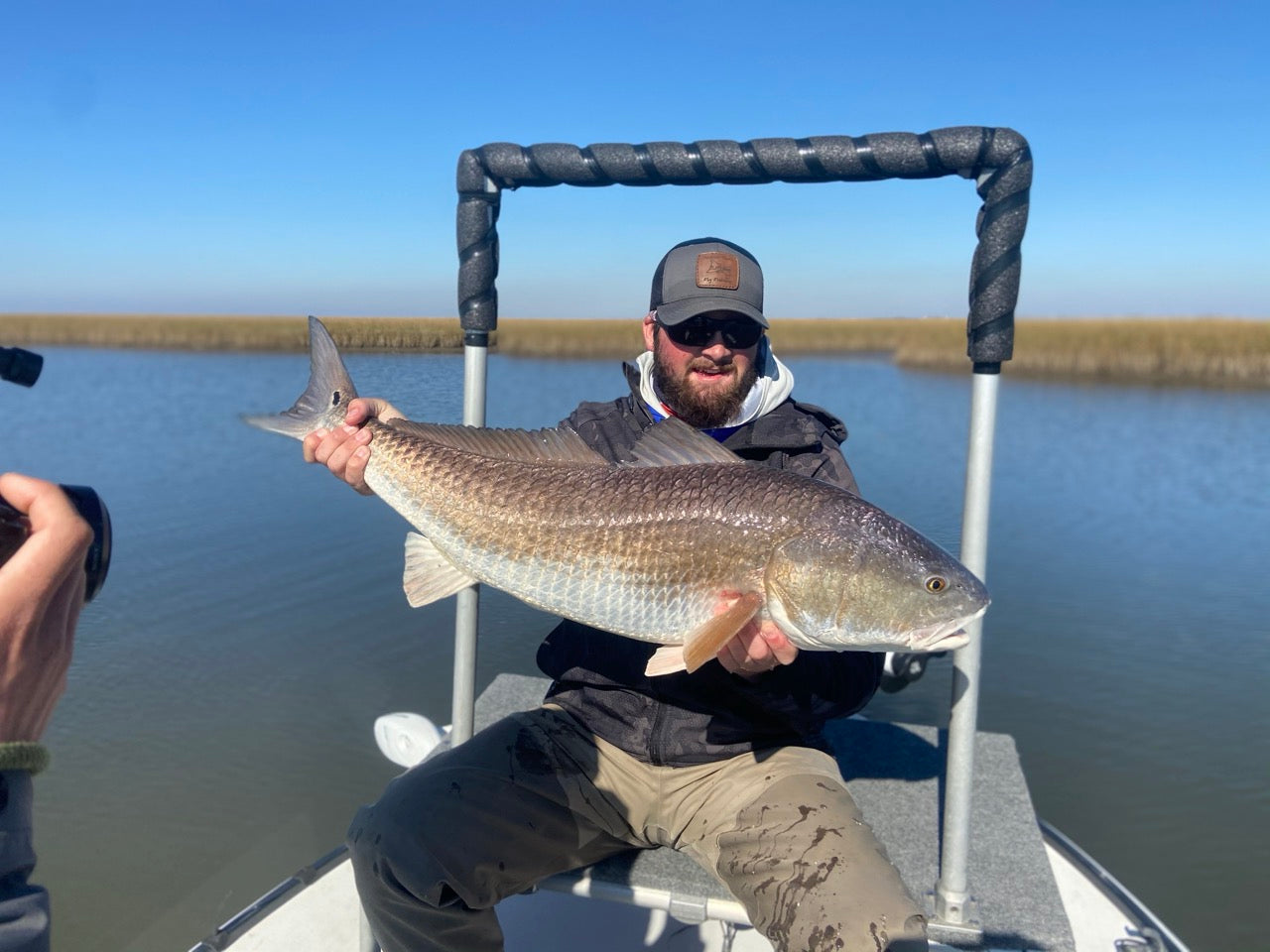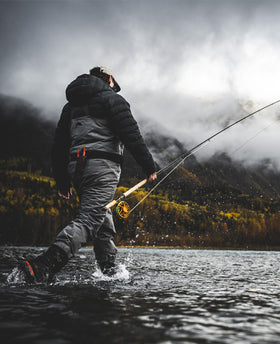
Road Trip Ideas to Avoid Runoff
Fly fishing during runoff can be a drag, with very few options available to anglers it can be hard to be motivated to fish. We all know that our local tailwaters, stillwaters, and warmwater options are available during this time period, but fishing them over and over can be monotonous. So why not hit the road and see something new? Runoff is our favorite time to hit the road and explore new waters, or just go back to see some familiar faces. Some trips only require a weekend, whereas others could be done more effectively with a couple more days. In this blog we’re going to talk about some road trip locations close, and some far! So stay tuned and we hope these inspire you to get out during runoff (even though it isn’t here yet).
#1: North Platte Tailwaters, Wyoming -Drive Time: 4 hours, 30 minutes

This is definitely the most popular road trip destination for Colorado anglers looking to “avoid” the crowds. Nowadays that statement is an oxymoron, as everyone and their mothers fish the North Platte tailwaters. No one is complaining about this though, as the local fly shops and guide services up there have done an excellent job of marketing such an amazing fishery. Even with the heavier crowds in the past ten years or so, the catch rate and size of fish have not gone away. The quality of these three separate fisheries truly puts our Platte to shame!
The nice part about driving up to this area is if one tailwater is loaded with people, an hour or so drive can get you to a completely different fishery. The most popular location is the Gray’s Reef, which is located underneath Alcova/Gray Reef Reservoirs and offers easy access to trophy sized, resident trout. This is certainly the most consistent between all three, and also offers the greatest diversity of trout species (rainbow, brown, cutbow, Snake River cutthroat, Yellowstone cutthroat, and Bonneville cutthroat).
The most famous of the three is the Miracle Mile, a stretch of river that lies between Pathfinder and Kortes Reservoirs. This fishery is essentially the Dream Stream on steroids! Large, migratory trout will enter the river from Pathfinder Reservoir and offer chances at both brown and rainbow trout in each of the migratory seasons. One unique thing about this river is the walleye that reside here during the warmer months. Oftentimes anglers chasing browns early in the fall, or rainbows late in the spring will encounter the migratory walleye entering the river that love eating streamers. Nothing like fresh fish on the campfire!
Lastly, the quieter section of the North Platte is Fremont Canyon. This section offers limited wading due to steep cliffs, but if you’re willing to climb down into this stretch, you can get amazing fishing. This is certainly the most technical stretch, and is very similar to fishing Cheesman Canyon. This section also receives a limited amount of migratory browns and rainbows in their respective seasons.
#2: Green River, Utah - Drive Time: 6 hours

The Green is one of the healthiest rivers in the world, supporting one of, if not the most trout per mile! The last survey showed that an estimated 12,000 trout reside per mile in the “A” section. Much like the North Platte, the Green is broken down to three distinct sections, A, B, and C sections. Each section is similar, but offers different fishing situations and river layouts. I won’t spend my time breaking down these sections since it is heavily nuanced, but that said all sections fish fantastic!
The Green River is famous for a few reasons other than the trout density. This is where the bounce method of nymphing was developed, allowing fly fishermen and women to effectively fish small bugs at great depths. This fishery also receives a unique “hatch” that few other rivers offer, this is the cicada hatch. No, this is not referencing the brood hatches that many east coast and midwest fisheries receive. Instead this is an annual hatch that offers dry fly fishing similar to the famous salmonfly hatches around the west. Big foam bugs, big eats, and big fish, what’s not to love?
This river is predominantly occupied by brown trout, which means excellent streamer fishing. Anytime of the year you can throw streamers and expect great results! This is one of the many guide services' favorite methods to chase fish when the hatches are subpar.
The Green is definitely a larger river, which can make wade fishing difficult, but certainly not impossible. Many anglers spend their time wading the canyon with a dry fly in hand. That said, if you have a buddy with a boat or have the means to hire a guide for a day or two, it can certainly open up many more opportunities.
#3: Warmwater in Phoenix, Arizona - Drive Time: 12 hours, 45 minutes

This one is certainly different from the other options in this blog as it’s catered to warmwater fishing. Bass and carp fishing in the Phoenix metropolitan area is world renown, offering endless access to public ponds, reservoirs, and canals for amazing sight fishing. Carp fishing isn’t for everyone, but this area is absolutely exceptional for those who enjoy this different type of fishing. Like I mentioned already, carp fishing is 100% based around sight fishing. This allows anglers to visualize an eat and know when to set the hook. After the hookup, expect a hard fight that’ll test your 6-8wt rod.
A Phoenix trip shouldn’t be based just around fishing. The metropolitan area offers fantastic dining, museum touring, and professional sport venues. When we’ve done this trip in the past, we spend maybe six hours of the day fishing, then spend the rest of our day touring the city and winding down with a beer and hotdog at a Diamondbacks game.
#4: Gulf Coast Redfish, Texas - Drive Time: 16 hours, 30 minutes

Another option that is a little different from the rest. Saltwater fly fishing is the perfect escape from the runoff blues. The flats fisheries on the southern Texas coast offer excellent sight fishing for redfish, black drum, sea trout, and many more species. Unlike the waters further north and east of the Gulf, much of the waters near Corpus Christi is gin-clear. Even if you aren’t fly fishing, enjoying the beautiful beaches of this area is unlike any other.
This isn’t a trip that any of us in the shop have done before, but it’s high on our bucket list and is why we’re recommending it. If you didn’t know by now, we love saltwater fishing (including redfish) and we offer numerous hosted trip opportunities in these environments. Although the Texas coast isn’t a place where we have fished or currently offer any trips, we’ve had an endless number of customers speak highly of this area.
The general area of Corpus Christi offers many different ports where guides like to launch out of. These areas include Corpus Christi proper, Port Aransas, Rockport, Port O’Connor, South Padre Island, and many more. There’s an endless amount of guides, lodges, and DIY options in this general area that will keep occupied.
#5: Western Slope Tailwaters, Colorado - Drive Time: 3-5 hours

A road trip doesn’t necessarily mean you need to leave the state. Colorado offers endless opportunities outside of our regular spots. During runoff, much of the western slope will be plagued from high, dirty water. That said, there’s still plenty of tailwater options, many of which hold trophy-sized trout. Some of the more popular options include the Taylor, Frying Pan, and Uncompahgre, with many other smaller, lesser known rivers. These three rivers mentioned are incredibly popular locations, with anglers around the world coming to see these fisheries. That said, anticipate a fair number of people and picky fish. But if you’re willing to stick it out and optimize your time with sight fishing, you have the chance at landing some of the state’s largest fish.
The Taylor and Frying Pan rivers are known for their mysis shrimp, a freshwater shrimp species that resides in the reservoirs above the river. During night-time and periods of fluctuating flows, these shrimps get spit out of the dam and into the river creating an all you can eat buffet for these large trout. The shrimp diet of these trout create incredibly unique coloration of the fish, with rainbow trout turning bright red, while the browns develop a true brown color with purple undertones and losing many of their spots. When the shrimp aren’t spewing out of the dam, don’t fret! These fish still have to eat and will happily eat whatever the current hatch is.
The Uncompahgre is a lesser-known tailwater, yet it has an incredible amount of publicity. This river is infamous for having low trout populations, with that being said it bolsters some of the largest trout around. The tailwater section is annually stocked with brood-stock Snake River cutthroat and rainbow trout, while also holding wild brown and rainbow trout, as well as the occasional brook trout. The stocked Snake River and rainbow trout are good fun when the larger, wild fish are difficult to find. But once you’re able to locate these behemoths, be ready to spend a fair amount of time convincing these fish to eat. They are difficult to catch because they will feed on the stocked trout, leaving little room for them to eat smaller bugs. That said, any trout is willing to eat a well presented bug!





Leave a comment